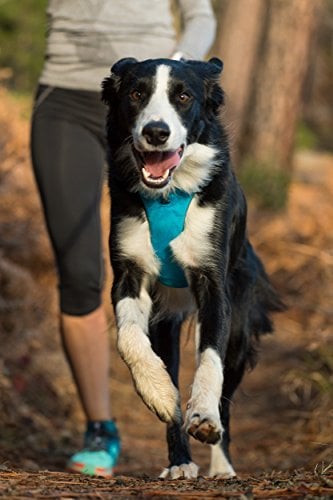- This post contains affiliate links. Read more here.
We’ve all heard about the importance of walking your dog. According to certified dog trainer Nicole Ellis, it’s one of the most important things a dog owner can do for their pet. Walking is a big piece of the puzzle for a dog’s health, along with regular check-ups at the vet, a wholesome diet, and the proper medication to treat illnesses. But just WHY are daily walks so vital?
Read on for the unique benefits of walking your dog, plus Nicole’s tips for addressing bad behaviour on lead.
“If there is one thing I can recommend each pet owner do, it’s go for a walk and spend time with your dog. – Nicole Ellis
Nicole belongs to Rover’s Dog People panel of professional trainers, veterinarians, and dog lifestyle experts.
Dog walking is more than just exercise
- Dog walking provides sensory stimulation. It gets the eyes, ears, and nose activated and working, prevents boredom, and teaches your pup how to be a well-behaved canine citizen. A back garden does not provide enough sensory stimulation.
- Walks are a great time to work on training. It’s a perfect time to practice sit, stays, come, and heeling at different speeds.
- Exercise helps to keep the digestive tract moving. Walking before bedtime helps dogs relieve everything from their system. As their muscles and body move, the stomach muscles start working to pass along food.
- Walking helps keep the weight off. A fitter, healthier dog has less stress on their heart and joints than an overweight dog. Regular walks help to keep your pet feeling like a puppy long past those puppy years.
- Walking is a great bonding and trust activity, especially when it becomes a daily routine. Want to be your dog’s favourite person in the house? Start going on walks together.
- Regular walks help prevent bad behaviour. A lot of naughty habits, from chewing to digging, are a result of boredom. Going on walks and getting your dog’s energy out will limit these issues. Caveat: some dogs do require medication for behaviour issues, so it’s a good idea to check with your vet or a canine behaviourist if your dog continues to have troubles despite regular exercise.
- Walking is good for human health, too!
What about bad behaviour when they’re on a lead?
With patience and rewards, you can teach your pup to walk around the neighbourhood like a natural. When you start, it’s fine to practice around the house or in the garden before venturing out to the street and all of its distractions.
- Be prepared with the right lead (and poop bags!) A shorter lead from 1.2 – 1.8 metres (4 – 6 feet), is less likely to tangle and is easier to manage.
- Choose a side for your dog to walk on. Once he has mastered it, you can begin to try the other side.
- Keep your dog at your side in a heel position. This helps in case of unpredictable elements like a loose dog, a child running over, a car reversing, and more.
- At first, reward your dog for sitting next to you. Then take one small step forward and ask for a sit. Be patient and reward when your dog does it correctly, and then slowly add on more and more steps.
- If your pup is pulling, try turning around and changing directions. Your dog will learn that pulling isn’t getting him where he wants to go.
- Perhaps even more important than the heel position is training your dog not to pull on the lead.
Harnesses to help with pulling
Some types of dog harnesses help prevent pulling, too. Nicole recommends one with a clip in the front, but not one that restricts a dog’s movement and shoulders. Nicole also likes Ruffwear’s harness with two side release buckles which you can get for £44.95.
The bottom line
Dog walks are vital for your pet’s quality of life and long-term health.
Nicole says, “exercise makes a big impact on a dog’s health. My dog Maggie is 9 years old. Walking and spending time together has always been a key part of our time, and she still hikes miles with me happily.”
Need help getting your dog enough exercise? Rover makes it easy to find and book a great dog walker.
_
The information provided in this article is not a substitute for professional veterinary help.




